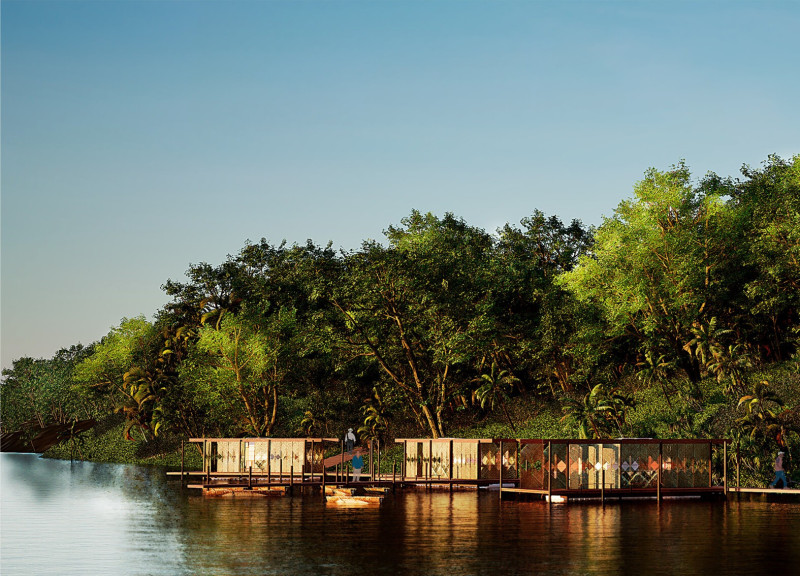5 key facts about this project
At its core, the project serves a multifaceted function which not only fulfills the needs of its users but also enhances community interaction. The architecture is characterized by an open layout that promotes fluid movement between spaces, encouraging collaboration and connectivity among its occupants. The design deftly integrates areas for both work and leisure, indicating a versatile approach that acknowledges the diverse ways people engage within architectural environments today.
A significant aspect of this project is its emphasis on materiality. The design employs a palette that includes sustainably sourced timber, robust masonry, and large expanses of glass. The use of timber introduces warmth, aligning the building with nature, while masonry provides structural integrity and resilience. Meanwhile, the extensive glazing facilitates natural light penetration, reducing the reliance on artificial lighting and enhancing the occupant's experience within the space. Additionally, careful consideration of seasonal changes informs the choice and arrangement of materials, allowing the building to adapt gracefully to varying climatic conditions.
Unique design approaches are evident throughout the project, showcasing innovative solutions to traditional architectural challenges. One notable element is the incorporation of green roofs and living walls, promoting biodiversity and enhancing thermal insulation. This integration of nature extends beyond mere aesthetics; it underscores a commitment to sustainability, encouraging occupants to engage with their environment. Moreover, strategically placed overhangs and shading devices not only add visual interest but also contribute to energy efficiency by mitigating solar gain.
Another essential feature of this architectural design is the emphasis on community engagement and inclusivity. Public spaces are seamlessly woven into the overall layout, inviting interaction among visitors and fostering a sense of belonging. The thoughtful placement of communal areas serves as a catalyst for social interaction, breaking down barriers between defined spaces.
The project’s unique identity is further shaped by its contextual relationship with the surrounding landscape. Landscaping is purposefully designed to complement the building, utilizing native flora that flourishes in the local climate. These elements not only enhance visual appeal but also support local ecosystems, embodying a holistic approach to architecture where the built environment coexists harmoniously with nature.
In summarizing the architectural project, it is clear that these elements converge to create a design that is not only visually compelling but also deeply functional and sustainable. The meticulous attention to material selection, unique spatial arrangements, and commitment to community interaction all contribute to its distinctive character. Readers interested in exploring this project further are encouraged to delve into the architectural plans, sections, and detailed designs that provide deeper insights into the innovative ideas that underpin this architectural masterpiece. Engaging with these elements will undoubtedly offer a richer understanding of how thoughtful design can influence everyday life and the environment.


























